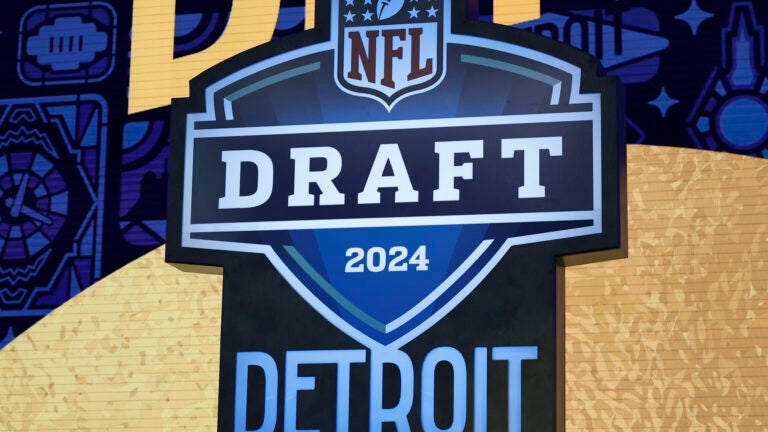Everything you need to know about the proposed Seaport gondola system
The glossy renderings are fun to look at, but is it really a good idea?

There’s an ambitious proposal to help commuters navigate the often-clogged streets of Boston’s Seaport district, and it has more in common with a mode of transportation associated with ski resorts than it does with the more conventional approaches to reducing city rush-hour traffic.
That’s right: Gondolas.
The eccentric idea — in which thousands of commuters would glide from South Station to the Seaport each day in aerial, cable-propelled lifts — has recently picked up momentum. But how close is it to actually getting off the ground? And should it? Here’s what we know so far:
Who is backing the idea, and why?
Seaport gondolas have been bandied about before, but the latest iteration of the idea was first proposed last summer by Millennium Partners, the New York-based development firm behind other Boston properties, such as the Millennium Tower in Downtown Crossing. According to The Boston Globe, the firm is even willing pay the $100 million needed for the project’s construction.
However, it isn’t a purely altruistic proposal for the sake of Seaport commuters; Millennium Partners would also benefit.
As the Globe has reported, Millennium Partners subsidiary Cargo Ventures controls 12 acres in the Raymond L. Flynn Marine Park, an industrial park where it is planning a massive new office campus. And according to the Globe, an agreement with the City of Boston (which owns Marine Park) mandates that Cargo Ventures spends up to $100 million toward transportation to alleviate the expected increase in traffic from their new development.
Parking and driving in the rapidly developing waterfront district is already difficult during rush hour and the Silver Line route that shuttles between South Station and Marine Park has reportedly been over capacity during the morning commute since 2015. As more companies and workers fill the Seaport, the congestion is only expected to get worse.
Proponents of the gondola system envision a reality where commuters are carried several stories above the bumper-to-bumper traffic. Millennium Partners says it would carry 15,000 people a day along the mile-long stretch from South Station to a gondola station at the Marine Park. And despite the self-advantageous positioning of the final terminal, the company says it would be widely beneficial.
“We can’t continue to focus on the same old things like shuttles and water taxis,” Millennium spokesman Michael Vaughan told the Globe last August. “This is an application that’s totally different, totally doable and would serve not just our project, but the industrial park and the South Boston community.”
What exactly would the gondola system look like?
According to the Globe, the gondolas would track Summer Street from South Station to the Marine Park about 30 to 50 feet in the air and include at least three stations along the route. Millennium recently revised their pitch to appease developers of the Omni Hotel, who criticized the original route for obstructing the view of the planned hotel‘s rooms.
In the new pitch, the entire gondola system would consist of 70 individual cable cars running every nine seconds and capable of carrying up to 10 passengers, according to the Globe.
[bdc-gallery id=”7282371″]
A second phase of the project would reportedly also connect the Marine Park station with the rest of the larger South Boston neighborhood south of the Reserve Channel.

A rendering of the Marine Park Terminus with the “Phase 2” additions.
Are there any precedents for passenger gondolas in other cities?
Sort of.
Two highly cited examples of urban gondolas are in Medellín, Colombia, and Portland, Oregon (the latter of which is technically an aerial tram, not a gondola). However, both systems were constructed to address geography — rather than traffic — carrying passengers up steep hills. Similarly, the Roosevelt Island Tramway in New York has shuttled Metro riders back and forth across the East River from Manhattan for more than four decades.
More recently, Mexico City opened a seven-stop gondola to cut down commutes and connect poorer communities with the heart of the capital. As The New York Times reported at the time, the Mexicable has “brought new visitors, shorter commutes, a burst of street art and a new sense of inclusion” to Mexico City and adds to a growing number of cable car systems in Latin America.
But is the proposal a good idea for Boston?
Depends who you ask. Local officials certainly haven’t shut down the discussion. In fact, Rep. Stephen Lynch has been openly supportive of the idea.
“This gondola system would carry the equivalent of 40 buses per hour, while reducing vehicular traffic and eliminating carbon emissions,” Lynch told the Globe. “While the route of the gondola may change, I am totally committed to working with Mayor Walsh to move this process forward.”
Noting the continuing influx of jobs in the the Seaport neighborhood, Boston Mayor Marty Walsh told WCVB last week that “everything is on the table” when it came to the gondola proposal.
At the same time, state and city transportation officials stress that the gondola idea is a preliminary concept for private transportation and that local agencies are looking at other alternative solutions to the Seaport congestion issue, such as dedicated bus lanes or bus rapid transit on Summer Street. MassDOT is also looking at a dynamic, $5 million traffic light control system in the Seaport, spokesman Patrick Marvin confirmed.
The Massachusetts Port Authority, which owns the Omni Hotel site and objected to the original gondola route as “unworkable,” reportedly still has some concerns. Massport did not respond to requests for comment.
Transportation advocates have perhaps been the one group most skeptical about the gondola idea due to concerns it wouldn’t be as efficient as simply better management of the traffic on the ground.
Chris Dempsey, the director of the advocacy group Transportation for Massachusetts, applauded Millennium for their willingness to come forward with a proposal, but said resources would be better spent focused on solutions that are more longterm-oriented and broadly beneficial.
“It’s great that the developer is offering to put some resources in to solve that challenge, but I think we need to be more focused on addressing congestion head-on, rather than building over it,” Dempsey said.
Jim Aloisi, a former Massachusetts transportation secretary, was a bit stronger in his dismissal of the gondola idea, which he said distracts from more viable ways of advancing “a practical, achievable, equitable mobility system.”
“These kooky ideas have no traction beyond the media reporting on them because they are backed by wealthy developers who are not transportation planners or policymakers,” Aloisi tweeted last November. “Give me a break.”







